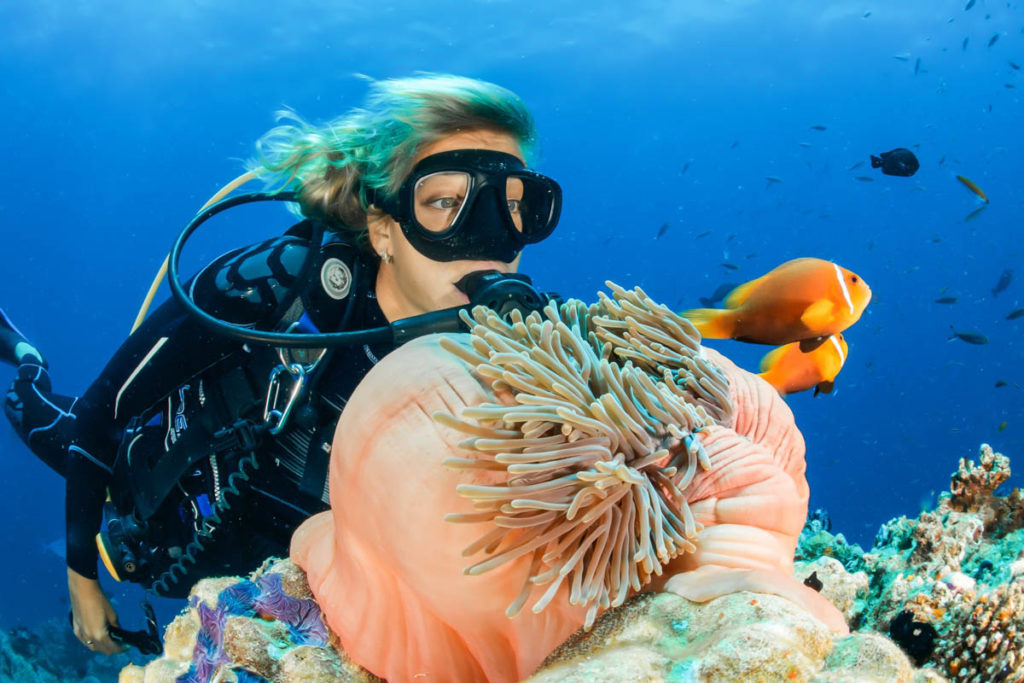“As scuba diving ages alongside its participants, a deeper story unfolds — of digital generations growing ever more distant from the real wilderness that sustains them.”
In recent years, an unmistakable trend has emerged across the global scuba diving industry: the average age of new divers is rising. Dive centers, training agencies, and liveaboards alike report that the bulk of their customers today are between 30 and 50+ years old. Meanwhile, certified divers under 30 years old are comparatively few.
At first glance, the assumption is predictable: cost. Scuba diving, it is argued, is simply too expensive for a younger generation burdened by student debt and rising living costs. Yet a closer examination reveals this argument is largely superficial.
Photography, cycling, skiing, gaming, and other hobbies popular among the 20–30 age group often demand equal — or even greater — financial commitment than scuba diving. A quality camera setup or a high-end mountain bike can easily match the investment required for dive training and equipment. Gaming computers and games are expensive. Despite this, these pursuits thrive among younger audiences. Financial barriers, while real in many respects, do not fully explain the generational gap in scuba diving.
Instead, the deeper issue lies in an uncomfortable truth: younger generations are increasingly disconnected from real nature — perhaps more than any generation in modern history.
Today’s young adults are profoundly digitally immersed. They experience wildlife, oceans, and wilderness not through firsthand engagement, but primarily through screens — filtered, edited, and curated into digestible moments. National parks, coral reefs, and wild coastlines exist, for many, as abstract concepts or backdrops for social media, rather than as tangible, living ecosystems that require patience, humility, and respect to truly encounter.
While environmental consciousness has become a powerful theme among younger people, much of it is performative rather than participatory. Social media is flooded with campaigns, hashtags, and curated photoshoots portraying environmental concern. Yet behind the posts, genuine, sustained engagement with the natural world is declining. It is easier — and socially rewarding — to “like” a post about ocean conservation than to spend hours in saltwater training, learn marine ecosystems intimately, or take responsibility for personal actions that impact the ocean.
Scuba diving, by its very nature, demands authentic interaction with the environment. It requires physical immersion, risk awareness, skill mastery, and, above all, respect for forces larger than oneself. It is the antithesis of instant gratification. The ocean cannot be curated; it cannot be fast-forwarded or filtered for aesthetic appeal. It is unpredictable, humbling, and deeply real — and therein lies the challenge for a generation accustomed to digital control over their experiences.
The emotional draw that once brought people to scuba diving — the mystery of the deep, the profound life of underwater worlds, the sense of true exploration — does not translate easily to a culture of constant online presence. Increasingly, younger people seek adventure sports that are fast, easily shareable, and low-commitment. With minimal training, mountain biking, kite surfing, and urban climbing can be accessed quickly, or switch on /off the game, and immediately converted into viral content. Scuba diving, requiring days of training, environmental sensitivity, and often travel, struggles to fit this model.
Moreover, modern risk culture plays a role. Surveys consistently show that younger generations are more risk-averse than any previous cohort. Scuba diving, despite its strong safety record, carries a perception of danger — sharks, decompression sickness, equipment failure — those contrasts with the carefully managed risks of other popular sports.
The cumulative result is clear: scuba diving today attracts a more mature demographic, individuals who have outgrown the need for instant validation, who value authentic experience over performance, and who seek reconnection with a world larger than their curated digital lives.
Paradoxically, this growing divide between young adults and nature occurs at a time when environmental crises — from coral bleaching to marine species extinction — require greater public understanding and engagement than ever before. A generation that champions environmental values, but rarely interacts directly with wild environments, is ill-equipped to advocate effectively for their protection.
For the scuba diving industry, the implications are serious. It is not enough to lower costs or speed up certification processes. The challenge is to reframe scuba diving not merely as a sport, but as an antidote to digital disconnection — a gateway to real-world belonging, mastery, and stewardship of the ocean.
This requires a shift in marketing, education, and community building. Scuba must be presented as a transformative experience, offering what digital life cannot: direct encounter with the vast, unfiltered mystery of the natural world. It must appeal not only to adventure seekers, but to those yearning for reconnection — even if they do not yet realize it.
Until society reckons with the true extent of its digital insulation, scuba diving will likely continue to be the realm of those who have the maturity to seek depth over surface, connection over image, and experience over illusion.
In the end, scuba diving’s future — and perhaps the future of marine conservation itself — depends on rediscovering the lost human instinct to be part of nature, not just spectators of it.
Learn more at: https://www.diveisc.com







